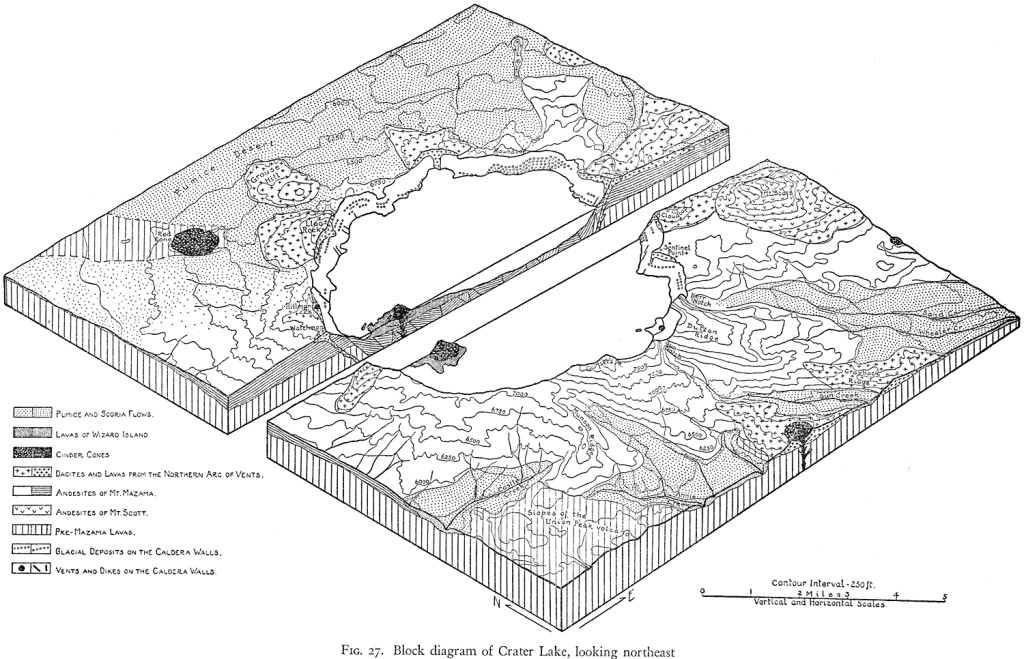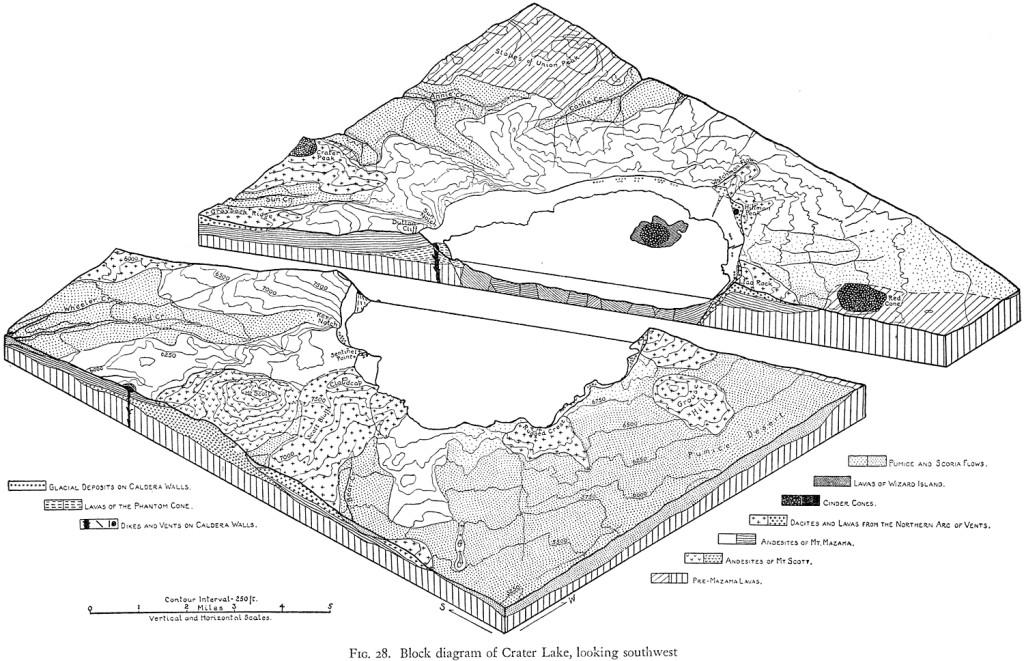The Geology of Crater Lake National Park, Oregon With a reconnaissance of the Cascade Range southward to Mount Shasta by Howell Williams
The Origin of the Caldera
A Preferred Theory
Throughout most of its history the magma erupted by Mount Mazama was hypersthene andesite. Eruption of diverse types of magma following prolonged outpouring of intermediate magma is almost invariably a sign of decadence in a volcano’s history. During the culminating eruptions, pumice and scoria were emptied from the magma chamber in unprecedented volume. First the dacitic, upper part of the chamber was drained; then followed large volumes of the underlying basic magma. Altogether, approximately 5 cubic miles of crystals and liquid escaped, carrying with them approximately 1.5 cubic miles of old rock, torn from the mountain top. This was not a long continued process; possibly the whole eruptive episode may have lasted only a few weeks or months. It may have been as brief as the activity preceding the destruction of Krakatau. Clearly, if this great volume of magma was erupted in so short a time, the magma chamber cannot have been replenished from below at the same rate. Accordingly, a potential or actual void must have been created in the upper part of the magma chamber. No longer supported by the pressure within, the roof must then have collapsed, carrying with it the summit of the cone (see figures 27, 28, and 29).
This, however, is not the entire story. Seventeen cubic miles of rock disappeared to produce the caldera. At most 1.5 cubic miles of this disappeared by explosion; another 5 cubic miles caved into the magma chamber to replace the liquid and crystals erupted. What happened to the remaining 10.5 cubic miles? That they must also have vanished by engulfment cannot be denied. We are therefore left to seek a cause.



